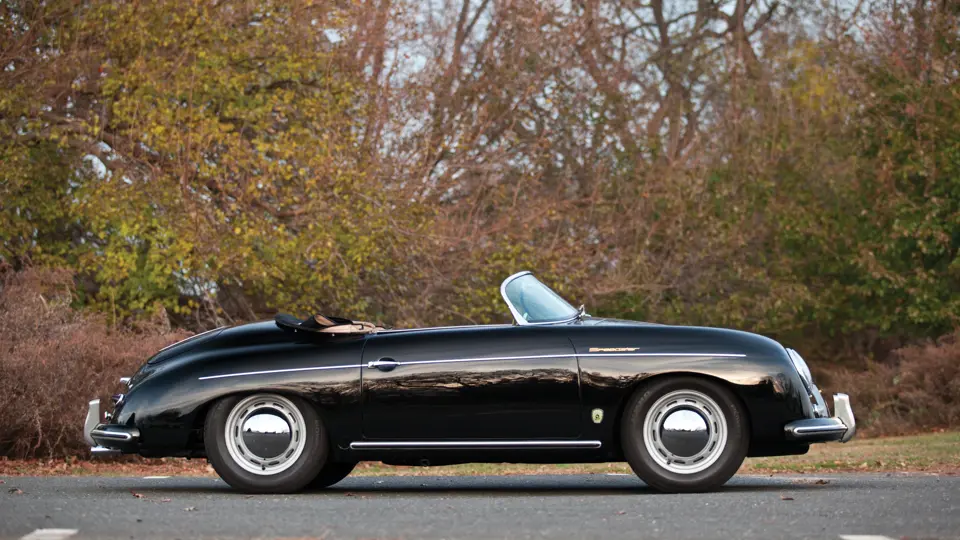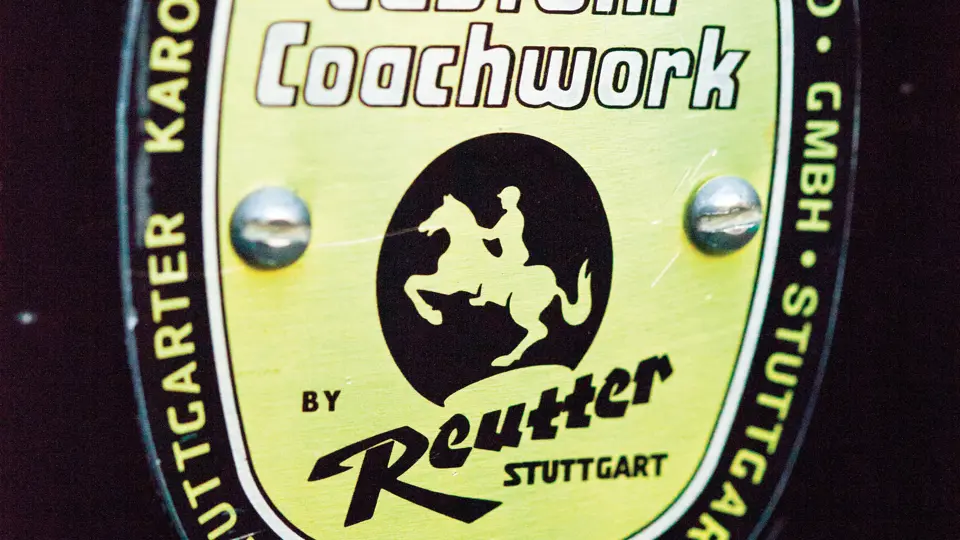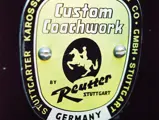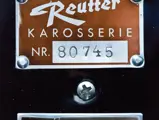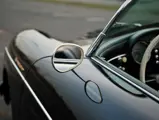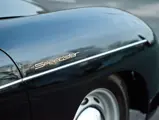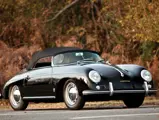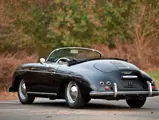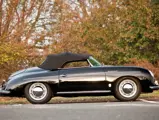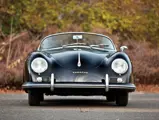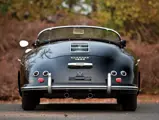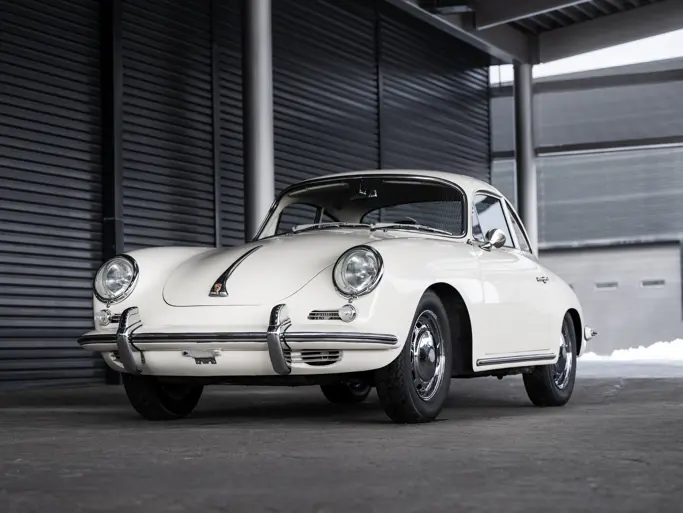55 hp, 1,488 cc air-cooled flat four-cylinder engine with twin Solex 32 PBI carburetors, four-speed manual transmission, independent front suspension with parallel trailing-arms and laminated torsion bars, rear swing axles with transverse torsion bars, and four-wheel hydraulic drum brakes. Wheelbase: 82.7 in.
• Impressive triple black color combination
• Correct engine compartment and fully detailed chassis
• Partial restoration, including a new top, side curtains, and carpet
• Desirable Speedster model
The 356 was designed by Ferry Porsche back in 1948, using the Volkswagen platform designed by his father. Lightweight and simple, it was instantly competitive, from hill climbs to long-distance rallying, and as a works car, it won the 1,100-cubic centimeter class at Le Mans in 1951. In so doing, it set a pattern that would continue for 60 years, producing some of the greatest race cars of the 20th century.
However, Americans have importer Max Hoffman to thank for the Porsche Speedster. The New York dealer brought 15 Special Roadsters to the U.S. in 1954. Seeking a competitive price point, he ordered them with bare-bones equipment. The gamble paid off, and the Speedster captured the public’s imagination—at an affordable base price of $2,995.
The Speedster was simple, and its light weight made it more fun to drive than the cabriolet. The windshield was cut down and the top curved, and an aluminum side spear made the car appear even lower. Tiny side screens replaced roll-up windows, and the top was minimal. The dashboard was made lighter with revised gauges, a padded lip, and no glove box. Seats were lower and non-reclining.
The Speedster literally took off in the U.S., with 4,144 finding enthusiastic buyers between 1954 and 1958. The venerable Speedster was a fixture at American tracks in the 1950s, driven by anybody who was anybody, from importer John Von Neumann, to future F1 world champion Dan Gurney and meteoric movie star James Dean. Skip Hudson was black flagged when lying 3rd at the 1955 Torrey Pines races and had to explain to the judges that he didn’t have to slow down for the corners because he could four-wheel drift around them.
In 1959, the Reutter-bodied Speedster was replaced on the street by the more sophisticated Convertible D. They boasted a taller windshield, windup windows, and a respectable top that fit better and didn’t give the impression of peering out of a mailbox. But, ultimately, it didn’t have the same magic.
The car offered today was one of 1,233 Speedsters sold in the U.S. from 1954–1955. While not numbers matching, it is described as fully sorted and a strong-running car. This Speedster is now handsomely finished in triple black and has a new top, side-curtains, and carpet. The engine compartment is affirmed to be an absolutely correct 1,488-cubic centimeter engine with twin Solex 32 PBI carburetors, an air tube, and an intake manifold. The chassis has been detailed, and a new battery box has been installed as well.
A lovingly restored and authentic 356 Speedster, this Porsche is well-suited for the true driving enthusiast and would make for an essential addition to any comprehensive sports car collection. A very rare car, it is a sheer pleasure to drive and will continue to remain highly collectable.




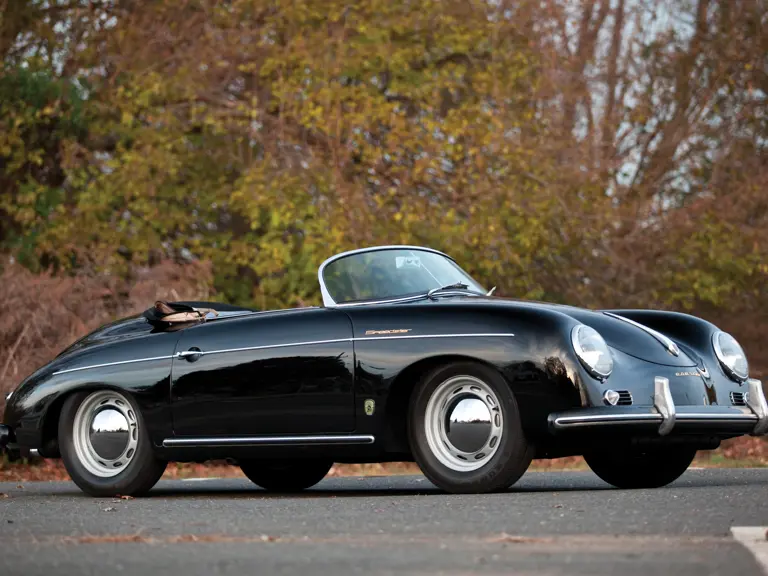

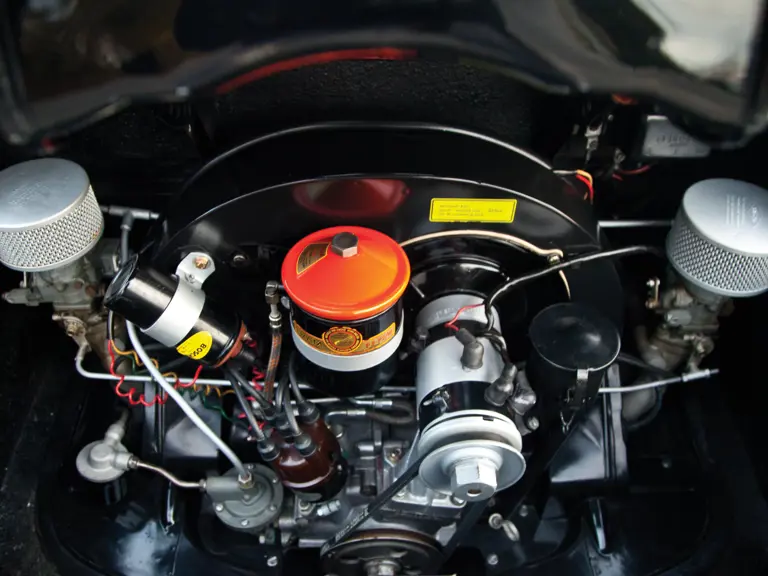
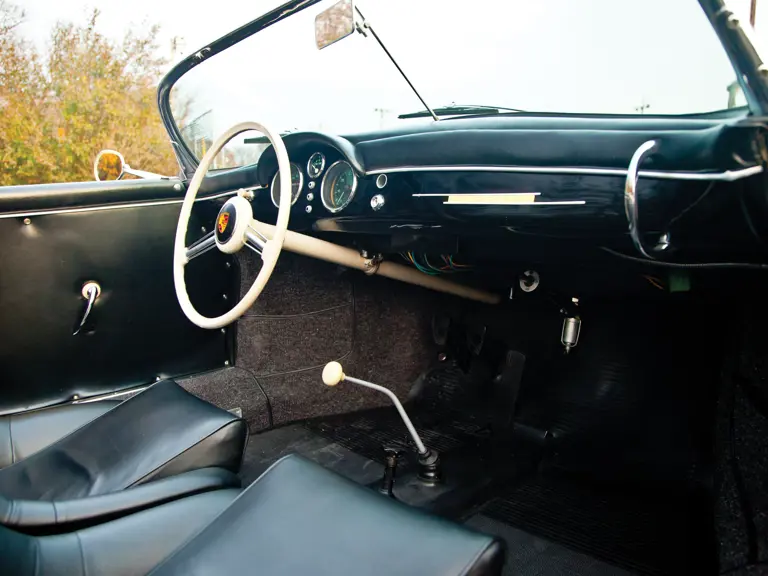
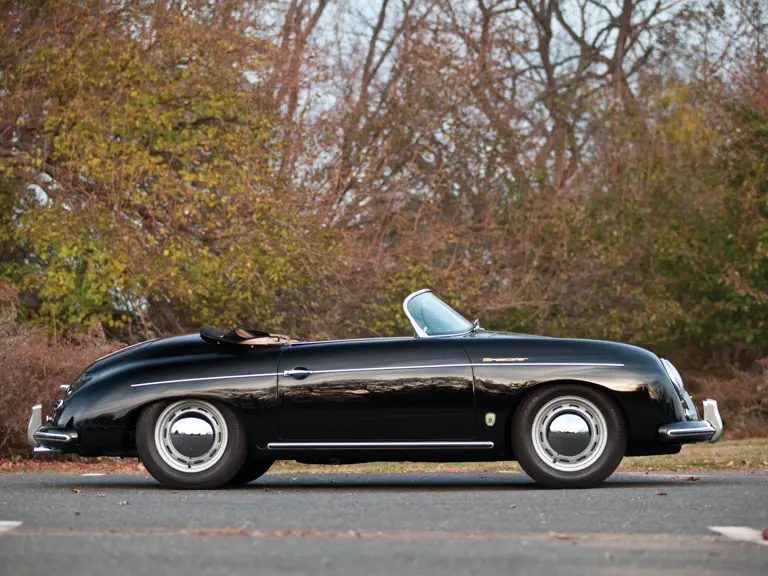

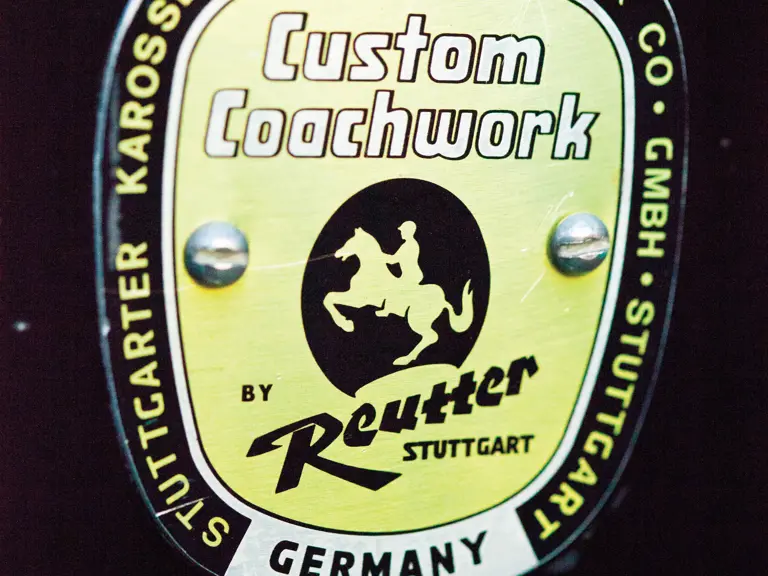
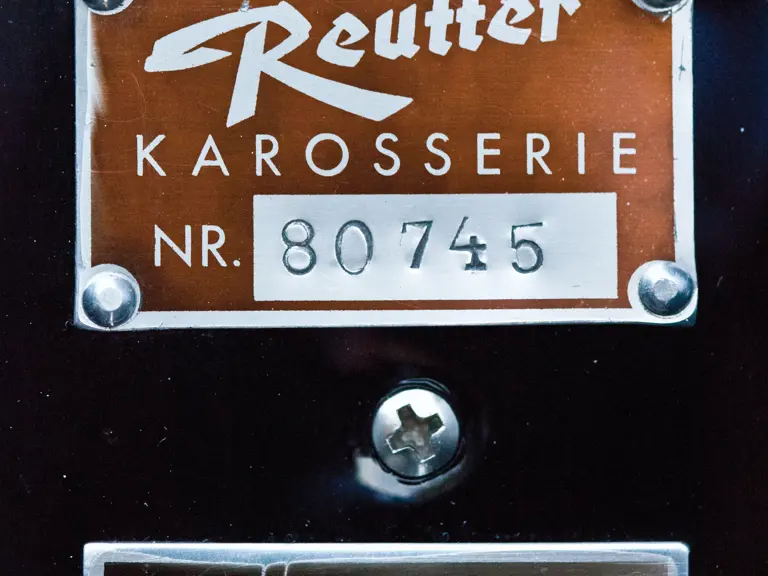
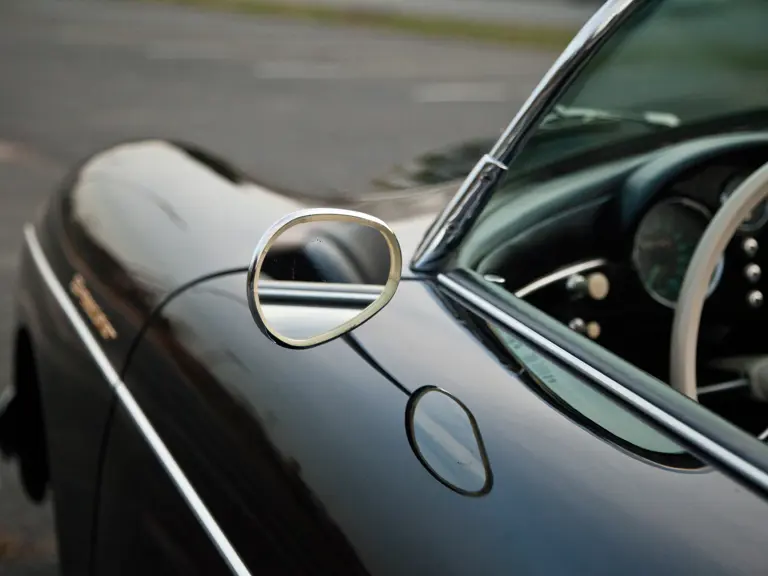
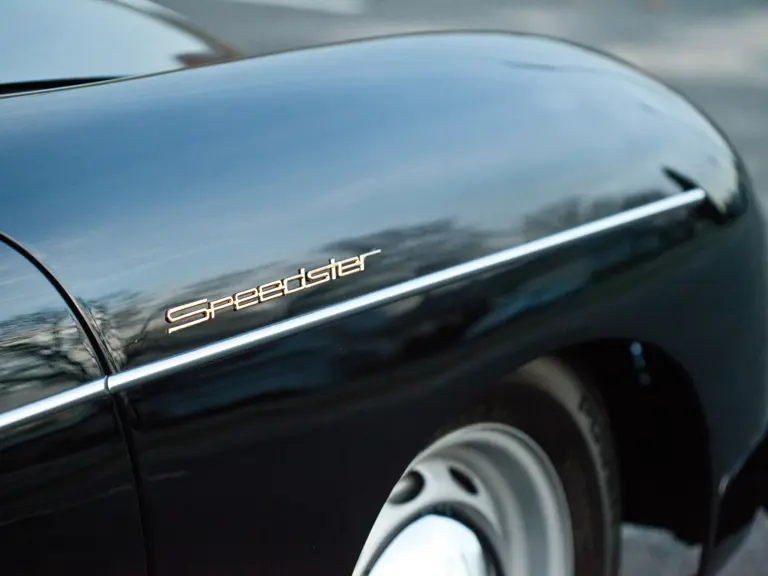

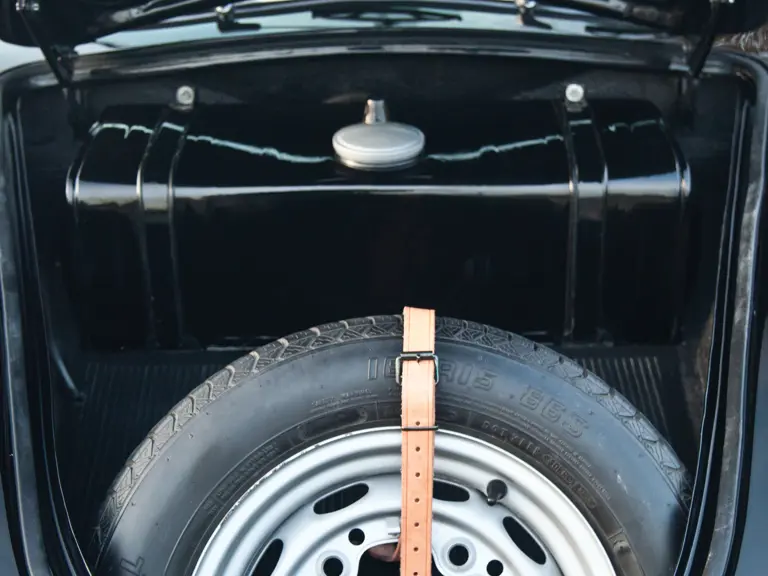
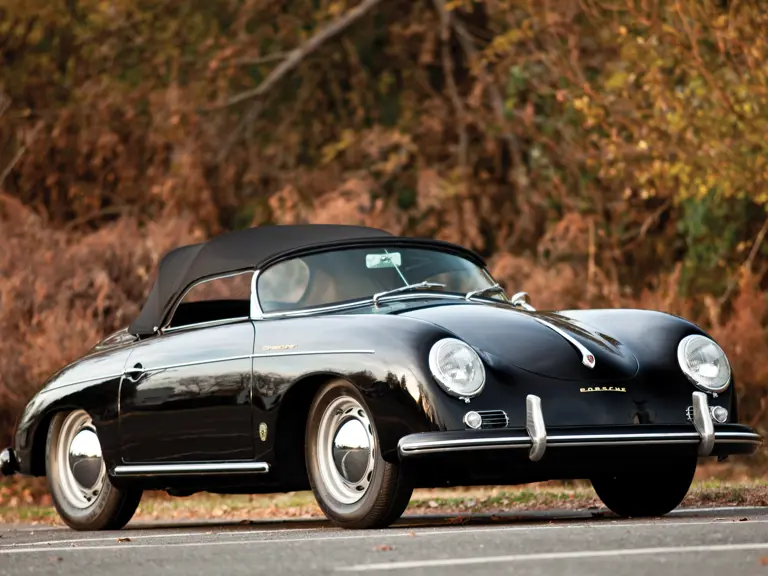
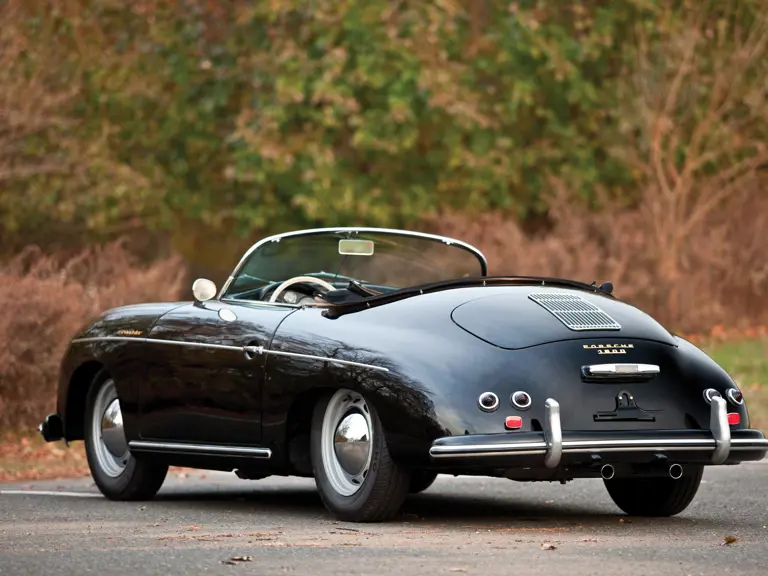


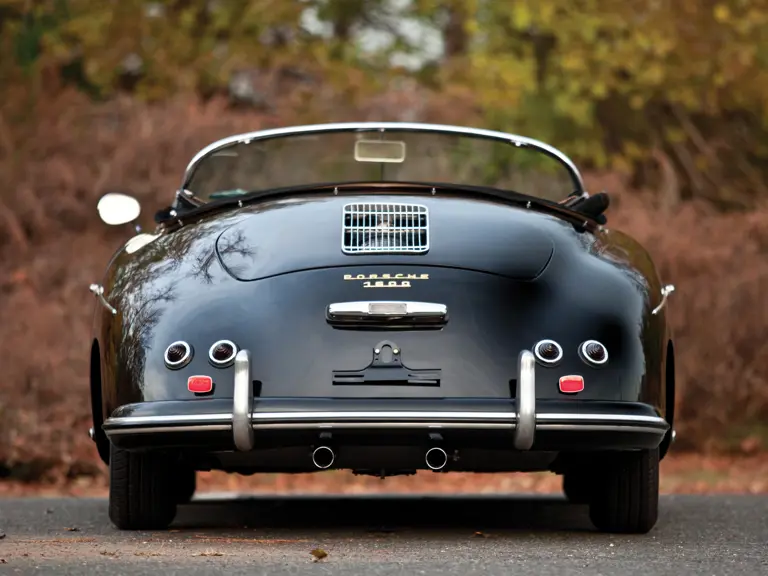
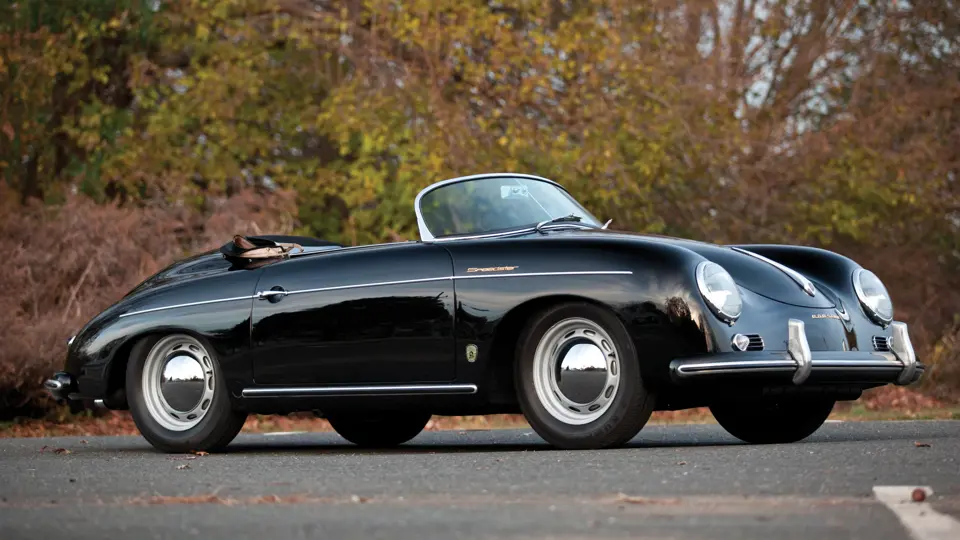
 | Phoenix, Arizona
| Phoenix, Arizona
